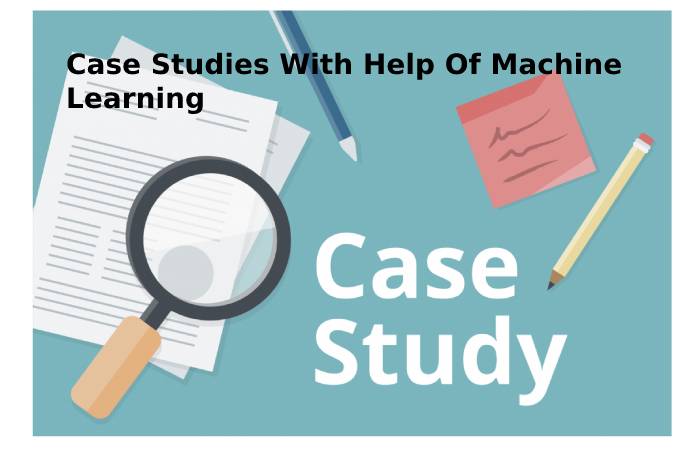Table of Contents
Definition
Subsets Of Artificial Intelligence – A subset of artificial intelligence (AI), machine learning (ML) is the zone of computational science that focuses on analyzing and interpreting. Data patterns and structures that make learning, reasoning, and decision-making possible. Decisions without human interaction. In other words, machine learning allows the user to feed a computer algorithm with vast data. However, from this. The computer analyzes all the information and can make choices and make recommendations based solely on the data enter. Furthermore, in the case of identifying corrections, the algorithm can incorporate that information to improve future decision-making.
Machine Learning Work, How It Work?
Machine learning consists of three parts:
- The computational algorithm is locates at the core of making determinations.
- The variables and functions that make up the decision.
- The knowledge base according to which the answer allows the system to learn (trains) is known.
Initially, the model is fed limitation data for which the response is known. The algorithm is then execute , and adjustments are made until the result of the algorithm (the learning) matches. The known answer. At this time, the amount of data enter is increasing to help the system learn and process a more significant number of computational decisions.
Machine Learning Important, If Yes Why?
Data is an essential part of every business. Decisions bases on data analysis increasingly make the difference between keeping up with the competition or falling behind. Machine learning can be the key to cracking the worth of corporate and customer data and enacting decisions that keep the business ahead of the competition.
Case Studies With Help Of Machine Learning
Machine learning will be apply in all types of industries; These include manufacturing, retail, health services, life sciences, travel and hospitality, financial services, energy, raw materials, and utilities. Case studies include:
- Predictive maintenance and conditional supervision
- Retail commerce. Upselling and Multi-Channel Marketing
- Health services and biological sciences. Disease identification and risk satisfaction
- Travel and hospitality. Dynamic Pricing
- Financial Services. Risk analysis and regulation
- Energy demand and supply optimization
Is Machine Learning A Part Of Artificial Intelligence?
Artificial Intelligence, Machine Learning, and Deep Learning are three different concepts but strongly related and that we often mix when discussing new technological trends. In this article, we clarify these three concepts. Still, we will start by explaining that Deep Learning is part of what we know. As Machine Learning and that Machine Learning is also a subset of Artificial Intelligence.
What Is Artificial Intelligence?
Artificial Intelligence (AI) is one of those research fields that is more popular than it really should be. Today, it is common to read information about the future of artificial intelligence, how machines will take away our jobs in a rare years, and it will be possible to develop robots that are practically indistinguishable from human beings.
In reality, many “superpowers” are attribute to Artificial Intelligence that is far from being realize. The truth is that the potential of this computer science is enormous, but the complexity of specific practical applications that are part of the popular imagination is still enormous.
Origin Of Artificial Intelligence
Artificial Intelligence as such emerged in the 1950s. The term was coined in 1956 at the Dartmouth conference, although work had already been done on it for a few years. Ideas about looking for mathematical rules that describe rational processes go back to ancient Greece, to the time of Aristotle.
Without wishing to review the entire history of AI, we refer to the first known definition: “it is the science and ingenuity of making intelligent machines, brilliant computer programs.” Other more modern descriptions can be more or less generic or more specific, but the underlying idea is that we try to imitate human cognitive functions through algorithms through AI.
Artificial Intelligence, Machine Learning, and Deep Learning
As is often the case in numerous fields, a general science usually includes subsets or more specific research areas responsible for solving particular problems. The same thing happens with AI. For example, automatic Learning (AA) or Machine Learning is said to be a subset of Artificial Intelligence. Deep Learning (AP) or Deep Learning, in turn, is a subset of Machine Learning.
Nothing is further from reality. That approach is known as Symbolic AI, and the so-called Expert Systems were developing from it. It was perfect for logical and well-defined problems, with a limits and apparent number of rules, like chess. But for other applications, such as image or voice recognition, these techniques are insufficient.
Conclusion
Machine Learning remains a subset of Artificial Intelligence dedicate to finding the best representation of the input data to produce a valid output data set. That is, ML algorithms consist of automatically finding. the words that convert input data into much more valuable representations of the same for a specific task. There is still much to be learn to obtain intelligent machines that can process emotions, have abstract thought, or be essentially indistinguishable from human beings. With successive sets of training data, the system will refine the rules to perfection and even be able to, to some extent, innovate and deal with non-standard data sets.
Also Read: Living Word Harvest Of Dallas App – About, Description, Eligibility Criteria And More
Related posts
Featured Posts
The University Of Indianapolis – Introduction, Rankings, Indianapolis Admissions, And More
Introduction The University of Indianapolis is an isolated institution that originated in 1902. It has a total scholar enrollment of…
Digital Marketing Channels – Definition, Main Channel, Strategy, And More
Definition Digital Marketing Channels – It is the most significant way to do online marketing and enhance your bussiness or…



